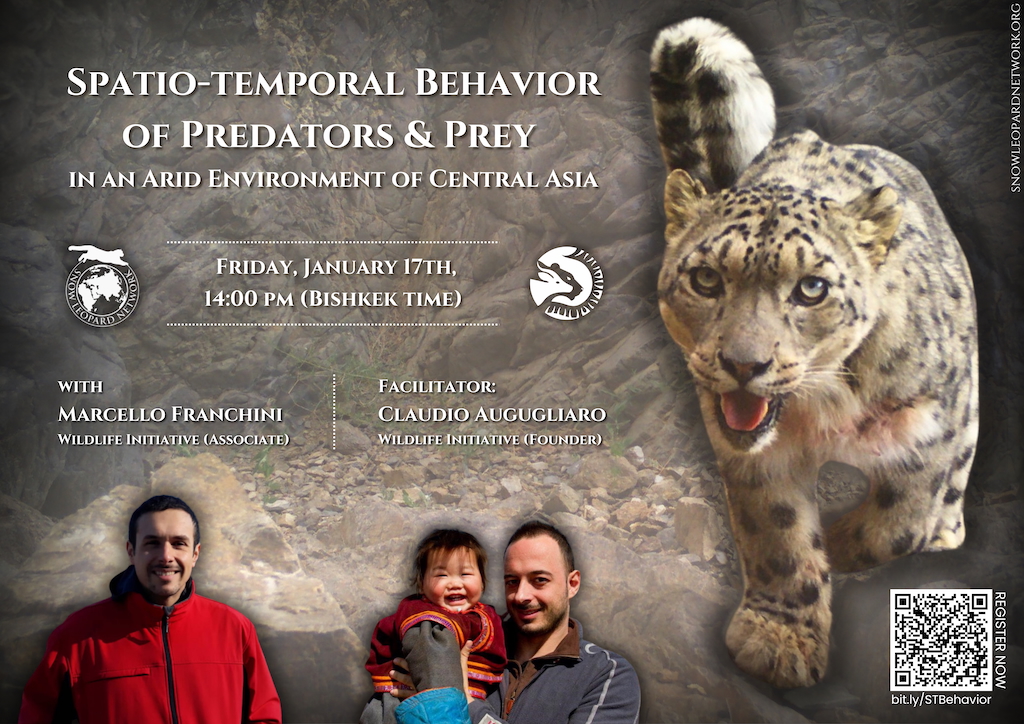The mechanisms of interactions between apex predators and smaller carnivores may range from competition to facilitation. In contrast, interactions between predators and prey are primarily driven by prey reducing the likelihood of encounters with predators. In this study, we investigated (1) the spatio–temporal interactions between an apex predator (the snow leopard Panthera uncia) and a mesopredator (the red fox Vulpes vulpes), and (2) the temporal interactions between the snow leopard and its potential prey (Siberian ibex Capra sibirica, argali sheep Ovis ammon, Asian wild ass Equus hemionus, and Tolai hare Lepus tolai) using camera traps in the Mongolian Great Gobi–A, an area covering approximately 44,190 km². The probability of occurrence for the red fox was higher in the presence of the snow leopard than in its absence. Additionally, the activity pattern of the red fox mirrored that of the snow leopard, with both species being most active at sunset. This positive spatio–temporal interaction suggests that the presence of the snow leopard may provide scavenging opportunities for the red fox. However, other explanations cannot be ruled out. Among the prey species, the Siberian ibex and argali sheep were primarily active during the day, whereas the Asian wild ass and Tolai hare exhibited more nocturnal activity. These findings suggest that potential prey species (particularly the Siberian ibex and argali sheep) may adjust their behavior to reduce the likelihood of encounters with the snow leopard. Our results highlight complex interactions between apex and smaller predators, as well as between the apex predator and its potential prey. However, further research conducted over a longer time period, incorporating estimates of local prey abundance and dietary analyses of predators, is needed to provide more comprehensive insights.

